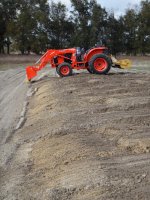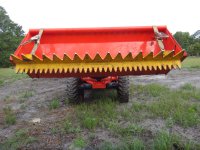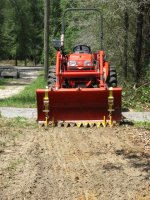siman00
New member
Hello all. I am the new owner of a used Kubota B2410. It has a 352 FEL and I'm trying to figure out what type of tooth bar, if any to use. I need to maintain about 1200 feet of mostly dirt driveway. The soil is a very sandy loam that has been packed tight and hard by years of traffic. There are shallow "ruts" where the wheels travel with grass in the area between the ruts.
I'm considering a Piranha tooth bar vs a more typical tooth bar. From what I can see, it appears that the Piranha tooth bar is best suited to remove heavy vegetation (which I do not have), while the more traditional tooth bar is better suited to aid in digging. I'm thinking I may be able to use the FEL to cut down the median and backpull that material to fill the ruts.
OR--- Should I forget a tooth bar entirely and get a box blade to use on the driveway?
I'm new to tractoring and will appreciate any help, advice or experience you can provide.
I'm considering a Piranha tooth bar vs a more typical tooth bar. From what I can see, it appears that the Piranha tooth bar is best suited to remove heavy vegetation (which I do not have), while the more traditional tooth bar is better suited to aid in digging. I'm thinking I may be able to use the FEL to cut down the median and backpull that material to fill the ruts.
OR--- Should I forget a tooth bar entirely and get a box blade to use on the driveway?
I'm new to tractoring and will appreciate any help, advice or experience you can provide.


